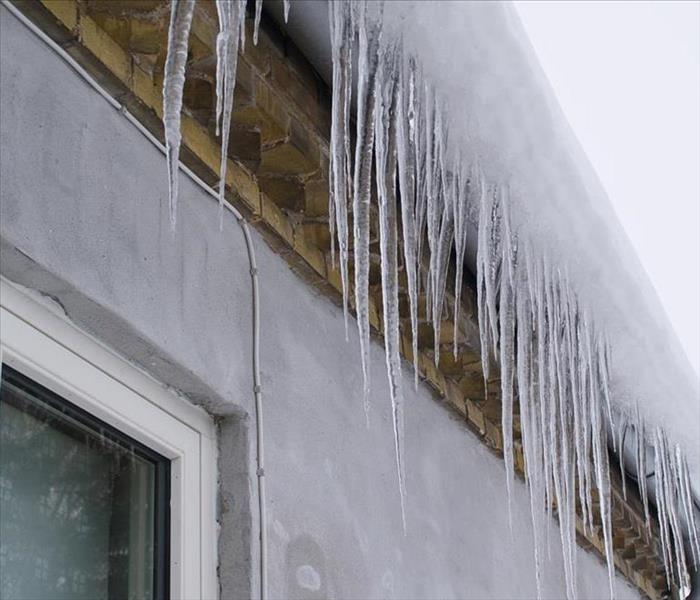Ice Dams 101: Understanding the Risk
3/19/2022 (Permalink)
Understanding the Risks of Ice Dams
Ice can be functional and even beautiful -- that is, until it’s all over your roof. The ice that builds up along the edge of your roof, also known as an ice dam, can tear off shingles, cause water damage, and more. Make part of your winter prep learning the signs and impacts of these ice structures, as well as how you can prevent them in your South Cleveland, TN, home.
What Is Ice Damming?
This is the result of a combination of heat, pressure, and cold temperatures. They occur when snowfall packs onto a sloped roof that’s poorly insulated. Heat from this type of roof combines with pressure from the snow’s weight to melt the snowpack at its base. The snowmelt drips can result in:
- Gutter damage
- Water leaks
- Popped shingles
How Do They Destroy?
It may not seem like an ice dam can wreak havoc, but it can. Water can melt, pool and refreeze in gutters, forming a heavy log of ice. Before long, your gutters can tear off under the weight.
Ice that has nowhere to go can also start backing up into your roof. It can get under your shingles and re-melt. The result can be everything from popped shingles to water damage in your attic. If the water continues to leak into your house, it can start to damage insulation, drywall and more.
What Can You Do?
The good news is, besides investing in ice dam coverage, there are many ways to tackle dam prevention. You can start with improving your roof’s insulation. It’s also a good idea to clear your gutters so they can more easily channel meltwater away and don’t get backed up.
An ice dam can be an unfortunate side effect of cold weather, but it doesn’t have to be. Understand how these ice blocks form and what you can do to prevent them. Work with a winter storm professional to help prepare your home, and you’ll get through the season dam-free.






 24/7 Emergency Service
24/7 Emergency Service
